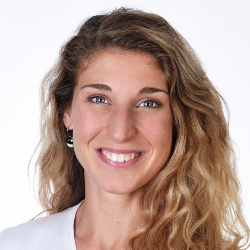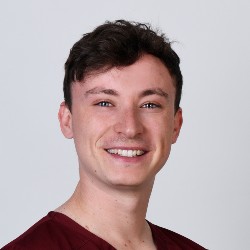Plagiocephaly in infants: physiotherapy rehabilitation in Lausanne
Understanding plagiocephaly in infants
Positional plagiocephaly is a deformity of the infant's skull. It is manifested by a visible flattening at the back or side of the head. It often appears in the first few weeks of life, in association with prolonged positioning on the back.
Since the introduction of campaigns to prevent cot death, this phenomenon has become more frequent. It is estimated that around one in five infants is affected. As the baby's skull is highly malleable, repeated pressure on the same area is enough to change its shape.
This deformity is usually benign. It does not affect the brain or neurological development. But if it is marked, it may be accompanied by torticollis, asymmetric motor retardation or mild facial asymmetry. Early treatment can limit these consequences.
(source: PMC Journal - Plagiocephaly).
What can parents do in the early weeks?
From birth, certain simple gestures can limit the risk of plagiocephaly. It is essential to vary the child's position throughout the day. Sleeping on the back remains imperative for safety during sleep, but waking times are key moments for promoting mobility.
Tummy time" is particularly useful. It strengthens neck and back muscles, and reduces pressure on the back of the skull. A few minutes, several times a day, is all it takes at first.
It is also advisable to limit the time spent in rigid supports such as car seats or deckchairs. Carrying, or alternating arms during feeding and carrying, encourages changes in position.
Finally, if you notice a head preference (always turned to the same side), gently stimulate the child on the opposite side. Place toys or your face on that side, or change the orientation of the bed. These little daily adjustments make a real difference.
(source: HealthyChildren.org)

When should you consult a physiotherapist in Lausanne?
If the deformity persists after the first few weeks, or if torticollis is suspected, it's a good idea to consult a professional. Don't hesitate to contact your paediatrician, who can advise you and refer you to physiotherapy if necessary. In fact, we work on the basis of a prescription from your paediatrician.
During the first session, an assessment is carried out. This assesses the child's skull shape, neck mobility and overall tone. Personalized advice is given on positioning at home. The treatment then begins with gentle gestures adapted to the baby's age.
The earlier the treatment begins, the better the results. Before the age of 6 months, skull growth enables rapid correction. In most cases, a few sessions are enough to restore harmonious symmetry.
(source : PubMed - Early Physiotherapy Intervention)
What does rehabilitation for plagiocephaly involve?
Physiotherapy for plagiocephaly includes gentle mobilization, playful exercises and parental guidance. It aims to improve cervical mobility, correct asymmetrical postures and stimulate overall motor development.
During the session, the therapist helps the child to turn his or her head towards the side that is less stressed. He also works on the neck muscles in case of torticollis. All gestures are adapted to baby's age, and performed in a calm, reassuring atmosphere.
Exercises are provided for parents to prolong the effects at home. Your daily involvement is essential. The aim is to help your child develop active symmetry, while respecting his natural development.
(source: Cochrane Review - Physical Therapy for Plagiocephaly)
Gentle, specialized care in Lausanne
At the Centre Philae in Lausanne, we offer special care for infants suffering from plagiocephaly. Our support is based on an expert, gentle and individualized approach, in a reassuring environment for parents and babies alike.
Rehabilitation is provided by Émilie and Martin, physio-therapists specialized in pediatrics. Trained in the management of postural and motor disorders in infants, they have extensive experience in the treatment of plagiocephaly, congenital torticollis and motor delays. They are specifically trained in the assessment and treatment of cranial asymmetries, respecting the developmental rhythm of each child.
Each session begins with a precise assessment of your baby's skull shape, cervical mobility and postural habits. Based on their observations, Émilie and Martin propose a personalized treatment plan, combining gentle mobilizations, postural advice and age-appropriate motor games. They also take the time to accompany parents, showing them simple gestures to reproduce on a daily basis.
If necessary, regular follow-up is set up to assess the evolution of the deformity and adjust the techniques used. The aim is to act early and gently, and to guide families through a reassuring, respectful and effective treatment process. Thanks to this specialized approach, the vast majority of plagiocephalies can be corrected without recourse to restrictive devices.


